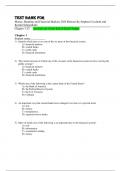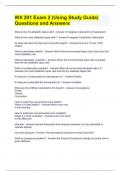Exam (elaborations)
Test Bank for Money, Banking and Financial Markets 2024 Release By Stephen Cecchetti and Kermit Schoenholtz
- Course
- Institution
- Book
Test Bank for Money, Banking and Financial Markets 2024 Release By Stephen Cecchetti and Kermit Schoenholtz
[Show more]





